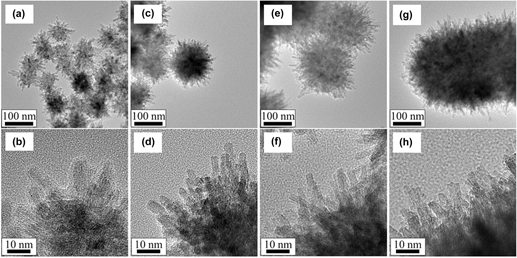Crossref Citations
This article has been cited by the following publications. This list is generated based on data provided by
Crossref.
Fuchigami, Teruaki
Kimata, Ryosuke
Haneda, Masaaki
and
Kakimoto, Ken-ichi
2018.
Complex Three-Dimensional Co3O4 Nano-Raspberry: Highly Stable and Active Low-temperature CO Oxidation Catalyst.
Nanomaterials,
Vol. 8,
Issue. 9,
p.
662.
Toomey, Emily
Colangelo, Marco
Abedzadeh, Navid
and
Berggren, Karl K.
2018.
Influence of tetramethylammonium hydroxide on niobium nitride thin films.
Journal of Vacuum Science & Technology B, Nanotechnology and Microelectronics: Materials, Processing, Measurement, and Phenomena,
Vol. 36,
Issue. 6,
Zhao, Tiaohao
Shen, Shanshan
Liu, Xiaohui
Guo, Yong
Pao, Chih-Wen
Chen, Jeng-Lung
and
Wang, Yanqin
2019.
Morphology-maintaining synthesis of NbN and its catalytic performance in epoxidation.
Catalysis Science & Technology,
Vol. 9,
Issue. 15,
p.
4002.
Yakovlev, I. V.
Papulovskiy, E.
Paukshtis, E. A.
Bondareva, V. M.
Toktarev, A. V.
Zaikovskii, V. I.
and
Lapina, O. B.
2019.
1H and 93Nb Solid-State NMR and IR Study of Acidity of Nanodisperse Nb2O5·nH2O.
Applied Magnetic Resonance,
Vol. 50,
Issue. 4,
p.
589.
Nikoloudakis, Emmanouil
Mitropoulou, Konstantina
Landrou, Georgios
Charalambidis, Georgios
Nikolaou, Vasilis
Mitraki, Anna
and
Coutsolelos, Athanassios G.
2019.
Self-assembly of aliphatic dipeptides coupled with porphyrin and BODIPY chromophores.
Chemical Communications,
Vol. 55,
Issue. 94,
p.
14103.
Fuchigami, Teruaki
Kuroda, Mami
Nakamura, Shuichi
Haneda, Masaaki
and
Kakimoto, Ken-ichi
2020.
Spiky-shaped niobium pentoxide nano-architecture: highly stable and recoverable Lewis acid catalyst.
Nanotechnology,
Vol. 31,
Issue. 32,
p.
325705.
Ding, H.
Song, Z.
Zhang, H.
Zhang, H.
and
Li, X.
2020.
Niobium-based oxide anodes toward fast and safe energy storage: a review.
Materials Today Nano,
Vol. 11,
Issue. ,
p.
100082.
Fuchigami, Teruaki
Yamamoto, Hayato
Tanibata, Naoto
Nakayama, Masanobu
and
Kakimoto, Ken-ichi
2022.
Growth Mechanism of Spiky Nb2O5 Nanoparticles and their Electrochemical Property.
physica status solidi (b),
Vol. 259,
Issue. 9,
Fuchigami, Teruaki
Oyamada, Yusuke
Haneda, Masaaki
Nakamura, Shuichi
and
Kakimoto, Ken-ichi
2022.
Synthesis and Acid Catalytic Activity of Al‐Doped Spiky‐Shaped Niobium Pentoxide.
physica status solidi (b),
Vol. 259,
Issue. 9,
Nwanna, Emeka Charles
Imoisili, Patrick Ehi
and
Jen, Tien-Chien
2022.
Synthesis of niobium pentoxide from bis(cyclopentadienyl) niobium(IV) dichloride using the spin coating process.
Polyhedron,
Vol. 220,
Issue. ,
p.
115828.
Gireeshkumar, B.C.
Kumar, B. Sharath
Nayaka, Y. Arthoba
Muralidhara, H.B.
Venkatesh, Krishna
and
Ramadas, A.
2023.
Improving energy storage efficiency through carbon doping of niobium oxide nanomaterials derived from areca husk in redox flow batteries and supercapacitors.
Journal of Energy Storage,
Vol. 71,
Issue. ,
p.
108139.
Li, Chunyan
Kim, Kyusung
Fuchigami, Teruaki
Asaka, Toru
Kakimoto, Ken-ichi
and
Masuda, Yoshitake
2023.
Acetone gas sensor based on Nb2O5 @SnO2 hybrid structure with high selectivity and ppt-level sensitivity.
Sensors and Actuators B: Chemical,
Vol. 393,
Issue. ,
p.
134144.
Fuchigami, Teruaki
2023.
Ligand-assisted synthesis of functional inorganic nanomaterials with hierarchical nanostructure.
Journal of the Ceramic Society of Japan,
Vol. 131,
Issue. 9,
p.
491.
Vega, Maria Rita Ortega
Consul, Viviane
Cadorin, Martina
Arenas, Leliz Ticona
Aguzzoli, César
Hübler, Roberto
Takimi, Antônio
and
de Fraga Malfatti, Célia
2023.
Niobium Oxide Nanorods Obtained by Hydrothermal Synthesis—Structure, Morphology, and Electrochemical Detection of Oxygen Via Oxygen Reduction Reaction.
Coatings,
Vol. 13,
Issue. 10,
p.
1786.
B, Ramya Prabhu
Shenoy, Bhamy Maithry
Verma, Manish
Nayak, Soumyashant
Hegde, Gopalkrishna
and
John, Neena S.
2024.
Self-cleaning formulations of mixed metal oxide-silver micro-nano structures with spiky coronae as antimicrobial coatings for fabrics and surfaces.
Materials Advances,
Vol. 5,
Issue. 10,
p.
4293.
Rianjanu, Aditya
Marpaung, Kurniawan Deny Pratama
Melati, Elisabeth Kartini Arum
Aflaha, Rizky
Wibowo, Yudha Gusti
Mahendra, I Putu
Yulianto, Nursidik
Widakdo, Januar
Triyana, Kuwat
Wasisto, Hutomo Suryo
and
Taher, Tarmizi
2024.
Integrated adsorption and photocatalytic removal of methylene blue dye from aqueous solution by hierarchical Nb2O5@PAN/PVDF/ANO composite nanofibers.
Nano Materials Science,
Vol. 6,
Issue. 1,
p.
96.
Verma, Gulshan
Sarraf, Sonu
Basu, Aviru K.
Ranjan, Pranay
and
Gupta, Ankur
2025.
Room temperature operated flexible MWCNTs/Nb2O5 hybrid breath sensor for the non-invasive detection of an exhaled diabetes biomarker.
Journal of Materials Chemistry B,
Beknalkar, S.A.
Teli, A.M.
Bhat, T.S.
Amate, R.U.
Morankar, P.J.
Baik, S.U.
Wu, Y.H.
Lee, J.H.
Kim, H.H.
and
Shin, J.C.
2025.
A brief review on niobium oxide for supercapacitors: Unveiling fundamentals, recent breakthroughs, and promising future horizons.
Journal of Alloys and Compounds,
Vol. 1010,
Issue. ,
p.
177473.
Khalid, Muhammad Usman
Rudokaite, Austeja
da Silva, Alessandro Marcio Hakme
Kirsnyte-Snioke, Monika
Stirke, Arunas
and
Melo, Wanessa C. M. A.
2025.
A Comprehensive Review of Niobium Nanoparticles: Synthesis, Characterization, Applications in Health Sciences, and Future Challenges.
Nanomaterials,
Vol. 15,
Issue. 2,
p.
106.




